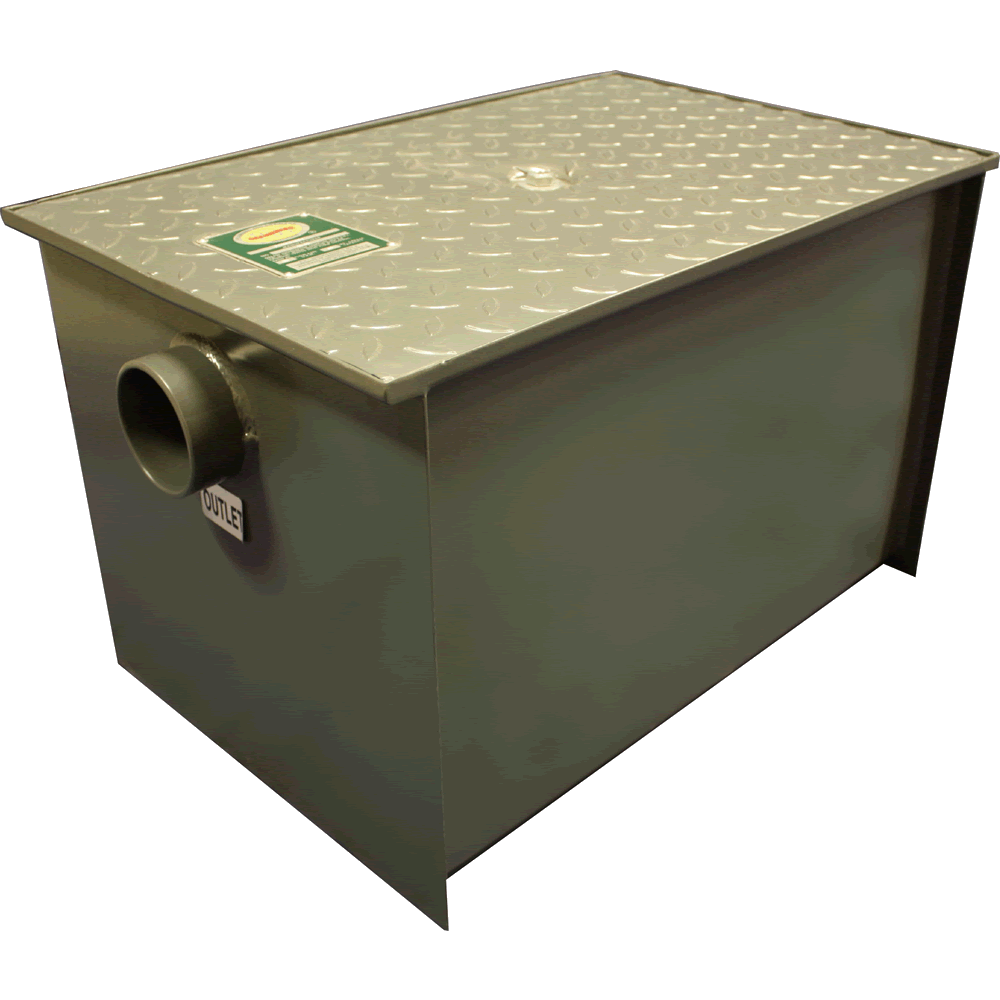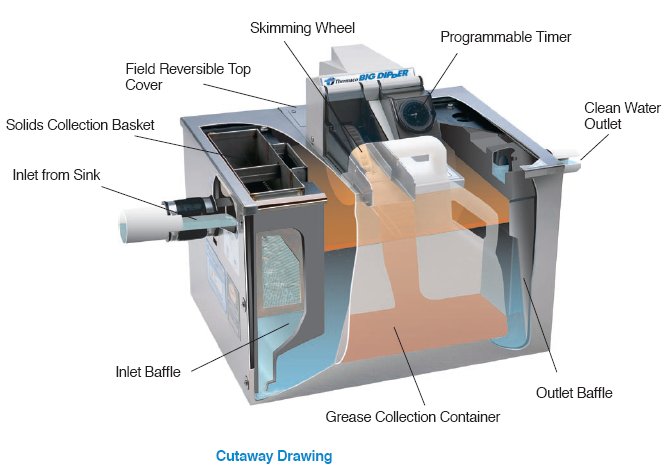Grease Trap 101: Types
 The first is the Hydromechanical. These units rely
on the principles of heat and gravity to separate the FOG from the waste water.
Normally these units are carbon steel or plastic. Hydromechanical grease traps
control the flow of water allowing the hot water to cool. The baffle catches
the FOG and keeps it inside the grease trap. These grease traps must be cleaned
manually and often. The sizing of the Hydromechanical units are expressed in
poundage and in gallons per minute (GPM) flow. Sizes are normally 8lb/4GPM,
20lb/10GPM, 30lb/15GPM, 40lb/20GPM, 50lb/25GPM, 70lb/35GPM and 100lb/50GPM
units.
The first is the Hydromechanical. These units rely
on the principles of heat and gravity to separate the FOG from the waste water.
Normally these units are carbon steel or plastic. Hydromechanical grease traps
control the flow of water allowing the hot water to cool. The baffle catches
the FOG and keeps it inside the grease trap. These grease traps must be cleaned
manually and often. The sizing of the Hydromechanical units are expressed in
poundage and in gallons per minute (GPM) flow. Sizes are normally 8lb/4GPM,
20lb/10GPM, 30lb/15GPM, 40lb/20GPM, 50lb/25GPM, 70lb/35GPM and 100lb/50GPM
units.
 The second type of grease trap is Gravity. This type of grease
trap uses compartments of two or more and uses the larger amount of water
flowing to slow down the water inside the trap. This allows for FOG to become
buoyant and to separate. The physical size of Gravity grease traps compared to
the Hydromechanical is large. These grease traps are more efficient, allowing
90% of the FOG to be collected out of the water. The sizing of the Gravity
units are expressed in the gallons it will hold.
The second type of grease trap is Gravity. This type of grease
trap uses compartments of two or more and uses the larger amount of water
flowing to slow down the water inside the trap. This allows for FOG to become
buoyant and to separate. The physical size of Gravity grease traps compared to
the Hydromechanical is large. These grease traps are more efficient, allowing
90% of the FOG to be collected out of the water. The sizing of the Gravity
units are expressed in the gallons it will hold.
 The third is an Automatic Grease Removal Unit (AGRU). This
type of grease trap utilizes mechanical and electrical components to actually
skim FOG out of the water. These systems are smaller yet highly efficient. Most
AGRU units can eliminate 99% of FOG from water. Most have an internal
collection device for food particles, a heating element and a external FOG
collection unit. The AGRUs are more expensive than the the other two, but one
can clearly see that they are lower maintenance and high efficiency. Sizing of
these units varies greatly and can come in sizes small enough to place under a
sink or large enough to accommodate an entire restaurant.
The third is an Automatic Grease Removal Unit (AGRU). This
type of grease trap utilizes mechanical and electrical components to actually
skim FOG out of the water. These systems are smaller yet highly efficient. Most
AGRU units can eliminate 99% of FOG from water. Most have an internal
collection device for food particles, a heating element and a external FOG
collection unit. The AGRUs are more expensive than the the other two, but one
can clearly see that they are lower maintenance and high efficiency. Sizing of
these units varies greatly and can come in sizes small enough to place under a
sink or large enough to accommodate an entire restaurant.
An excellent guide to grease traps is located on PDI's website: PDI's Guide to Grease Interceptors
To read more about the history of grease traps,
click here:Grease Trap 101: History.
To read more about the sizing of grease traps, click here: Grease Trap 101: Sizing.



